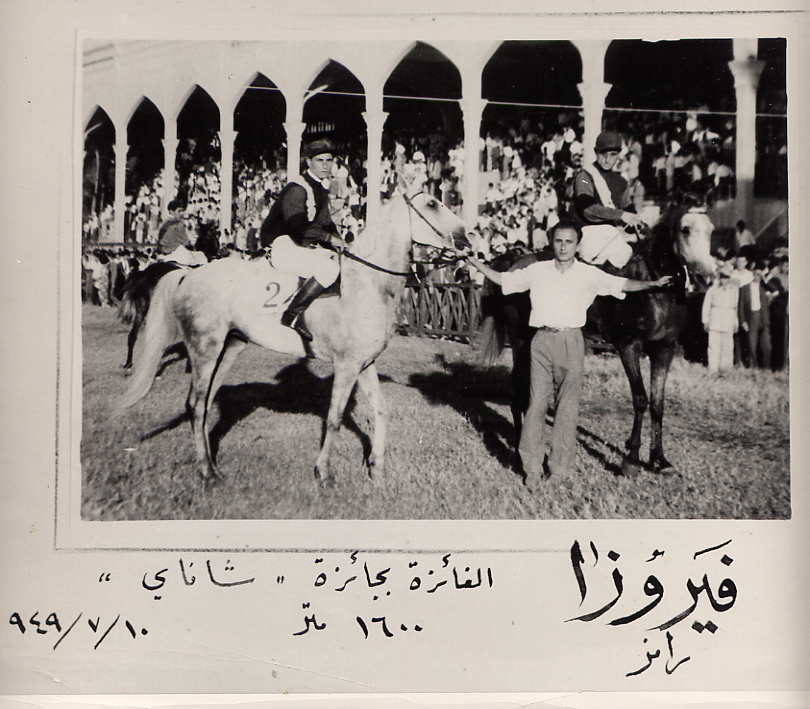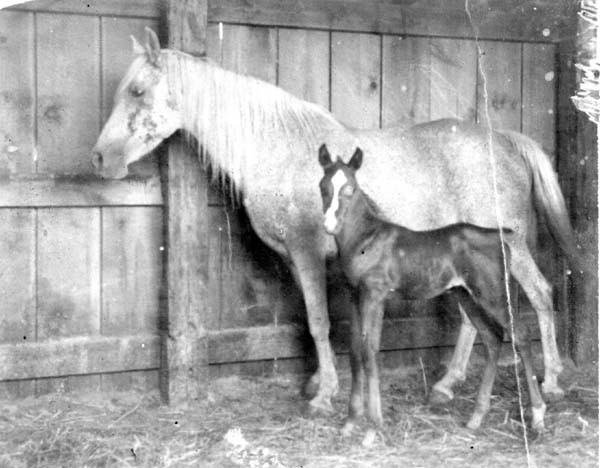On the Sa’dan Tuqan strain in the Abbas Pasha Manuscript — and beyond
A search for horses of the strain of Sa’dan (Sa’adan/Saadan) Tuqan in the Abbas Pasha Manuscript, using two different spellings of the name, Tuqan and Tawqan, yielded three mentions, all pertaining to the same horse, which was owned by the Mutayr:
The first is on page 439 and occurs in a testimony by Shafi ibn Fuhayd al-Sayfi, the leader of the Central Arabian Bedouin tribe of Subay’, about a mare from the strain of Ubayyan Sharrak that was known after his name (Ubayyan al-Sayfi): “And we mated the safra, Hosayna, to a Kuhaylan Saada Tuqan, the horse of Ibn Hobaylis of al Qublan of Muteer“.
The second is on page 440, in the same account, about a close relative of the first mare being bred to the same horse: “We mated the safra Al Dughayim to Kuhaylan Saada Tuqan, the horse of Ibn Hobaylis of al Qublan of Muteer”.
The third account is on page 620. It is by Sharyan ibn Abd al-Aziz al-Dawish, of the leading Dawish clan of the Mutayr tribe, about a mare of the Rabdan strain, which this clan bred: “And we mated the shaqra a second time to Sa’adan, whose mother is Saada Tawqan, the horse of al Madjalida of al Qublan of al ‘Ulwa of Muteer“.
All this may look innocuous, but there is more than meets the eye here: In Carl Raswan’s classification of strains, Sa’dan appears as an ancient strain, originally from Yemen, which became “mixed with Muniqi blood” after it came to Iraq, where it acquired the Tuqan denomination. Raswan’s implication is that all the horses of the Sa’dan Tuqan strain carry a measure of contaminated “Muniqi blood”. I don’t know what credence should be given to Raswan’s allegations, both about a “Muniqi” strain being contaminated with Turkmen blood in general, and about the Sa’dan Tuqan contamination with “Muniqi” bloodlines. Still, I find it noteworthy that in the late 1840s or early 1850s, when the accounts that form the Abbas Pasha Manuscript were compiled, the leaders of two major Bedouin tribes of Central and Eastern Arabia were breeding their mares to a horse from this strain. Three possibilities, all interesting in their own way: either Raswan’s account is incorrect; or these two Bedouins leaders didn’t know about it; or they knew about it and did not care.
There is another mention of the Sa’dan strain on page 565, without the Tuqan denomination. The Tuqan part may be implied, given how common it is. The account is by another Bedouin of the leading Dawish clan of Mutayr, Allush ibn Barghash al-Dawish, about a mare of his, from the Jazian strain: “we mated the mother a fourth time to Saadan, the horse of Ghobain, the Sheikh of al Fid’an“.
This may well be the same horse as the one above. He would have passed from the leader of the Fad’aan (alt. spelling Fid’an) ‘Anazah tribe to the Mutayr tribe. If that were indeed the case, the Sa’adan stallion would have been referred to both after the man he passed from, and the man he went to. There are two reasons for his being the same horse as the Sa’adan stallion of Mutayr mentioned thrice above: first, the owner of the Jazian mare that was bred to him was himself from the Mutayr, increasing the chances that he’d have bred his mare to a stallion from his own tribe; second, that mare was mated five times in all, and the other four times she went to stallion present with the Mutayr tribe, hence increasing the likelihood of the first event even further. There are numerous instances in the Abbas Pasha Manuscript of one Bedouin tribe breeding from a stallion taken from another tribe (as opposed to only using “homebred” stallions).
The reference to the Ghobain (Ghubayn), who were the leading clan of the Fad’aan Anazah before the Mhayd (Mahayd/Meheyd/Mheyd) is also noteworthy. The strain of Sa’dan Tuqan currently found among the Tai Bedouins in North Eastern Syria is known to have been taken from their ‘Anazah neighbors. The Hamidie Society mare *Nedjme, who from the Sa’dan Tuqan strain per Dolbony was also from the ‘Anazah. So was one of Lady Anne Blunts mares from that strain — either Francolin or Tamarisk, I forget which one (reminder to self to check). Finally, there is a great likelihood that the Sa’dan Tuqan strain of the Hindi family of Lebanon, the strain my family was associated with since the 1920s, was also from the ‘Anazah, but there is no record of this.
Below, a photo of two mares of that Hindi strain at the racetrack of Beirut, Lebanon in 1949. Fayrouza, the winner of the race, on the left, and *Bint Attebe, on the right. The photo was given to me by Brahaim Hindi of Vaugh, NW, whose father and uncle imported *Bint Attebe to the USA in 1949, together with another related Sa’dah mare, *Dalal and a stallion, *Daham. *Bint Attebe won a show at Estes Park, CO. My father and I owned a descendant of Fayrouza, back in Lebanon. She was one of our last mares there. Her name was Fayrouza III.

Below, *Dalal, a grand mare of the type I remember from my childhood and still long for. Photo also from Brahaim Hindi.

Those are three very nice mares.
Re the stallion in the APM, Ibn Hobaylis and al Madjalida are the same person? Interesting as well that there was a Saadan stallion with the Fad’aan; my insular little mind is going oh ho, Freiha al Hamra came from Sheikh Zaid Ibn Huraymis of the Fad’aan, wonder if this Saadan is an ancestor of hers.
Ibn Hobaylis is from al Madjalida of al Qublan of al Ulwah of Mutayr. Just kore details about the tribe, section, sub section and clan, down to the family.
I found another mention of the Sa’dan of Ibn Hubaylis in the APM, this time hidden under the generic Kuhaylan strain:
Page 629: “And we mated her a second time to Kuhaylan, the horse of Ibn Hobaylis of al Qublan of Muteer, and she gave birth to a sawdah.”
Oooh, I do love the way the pdf is allowing you to compile a concordance of strains so quickly.